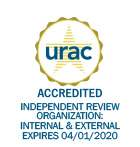
November 2018 •
Volume 20 •
Issue 11
Providing Current Information on
Health Insurance Industry Issues and Legislation
Employers Adsorbing More of Health Care Increases, Attacking Causes
In 2018, employees experienced the smallest percentage increase in the cost of
their healthcare plans in the last 5 years. While premiums increased 3.5%, employee
contributions rose only 2.2%. The shift reflects employers' needs to attract and
retain talent in today's tight labor market. Importantly, employers are not only
taking on more of the premium burden but are more aggressively employing a
variety of new strategies to try reign in their health care costs and their employee
health care related expenditures.
their healthcare plans in the last 5 years. While premiums increased 3.5%, employee
contributions rose only 2.2%. The shift reflects employers' needs to attract and
retain talent in today's tight labor market. Importantly, employers are not only
taking on more of the premium burden but are more aggressively employing a
variety of new strategies to try reign in their health care costs and their employee
health care related expenditures.
Costly Medical Billing Errors Abound
The American Medical Association estimates 7.1% of medical bills contain billing
errors. Stephen Parente, professor of health finance at the University of Minnesota,
estimates that 30-40% of medical bills contain errors. Billing errors, especially for
hospital claims, often result in significant overcharges. Bundling, unbundling,
duplicate billing, improper quantities and mismatched treatment/diagnostic
codes all abound. Fortunately, there are ways to catch these costly errors and save
significant dollars.
errors. Stephen Parente, professor of health finance at the University of Minnesota,
estimates that 30-40% of medical bills contain errors. Billing errors, especially for
hospital claims, often result in significant overcharges. Bundling, unbundling,
duplicate billing, improper quantities and mismatched treatment/diagnostic
codes all abound. Fortunately, there are ways to catch these costly errors and save
significant dollars.
Individual Attention Replacing Wellness Programs
Wellness programs are used most by those who are already relatively healthy
and committed to investing in their health. Employers are starting to shift
from structured wellness programs to individualized condition management
programs (CMP), targeting employees who sit between at-risk and sick. This
group accounts for over 60% of healthcare expenditures. CMPs are individualized
programs focused on providing the right resources at the right time with dynamic,
personalized attention. The results to date have been very positive.
and committed to investing in their health. Employers are starting to shift
from structured wellness programs to individualized condition management
programs (CMP), targeting employees who sit between at-risk and sick. This
group accounts for over 60% of healthcare expenditures. CMPs are individualized
programs focused on providing the right resources at the right time with dynamic,
personalized attention. The results to date have been very positive.
Can "March-In-Rights" and Section 1498 Reign in Prescription Drug Prices?
In their efforts to control rising prescription drugs price, lawmakers are now considering
applying two little known and rarely used patent law workarounds to take back patents
and license them to other companies. One, "march in rights", provided under the 1980
Bayh-Dole Act, empowers the government to rescind a drug's patent and let other
companies develop versions of it. The other, Section 1498, gives the U.S. the right to
use a company's patent in the interest of the public health, the national security and
commerce. America's Health Insurance Plans (AHIP) is pushing for the government to
take over and grant some patents to other companies while the Pharmaceutical Care
Management Association is pushing the administration to use "march-in-rights".
applying two little known and rarely used patent law workarounds to take back patents
and license them to other companies. One, "march in rights", provided under the 1980
Bayh-Dole Act, empowers the government to rescind a drug's patent and let other
companies develop versions of it. The other, Section 1498, gives the U.S. the right to
use a company's patent in the interest of the public health, the national security and
commerce. America's Health Insurance Plans (AHIP) is pushing for the government to
take over and grant some patents to other companies while the Pharmaceutical Care
Management Association is pushing the administration to use "march-in-rights".
Three Star Preferred Provider Program Additions
|
San Antonio, TX 78258 Patrick Landry, M.D. Latrobe, PA 15650 |
Glen Allen, VA 23060 Michiana Direct Primary Care Mishawaka, IN 46545 |
